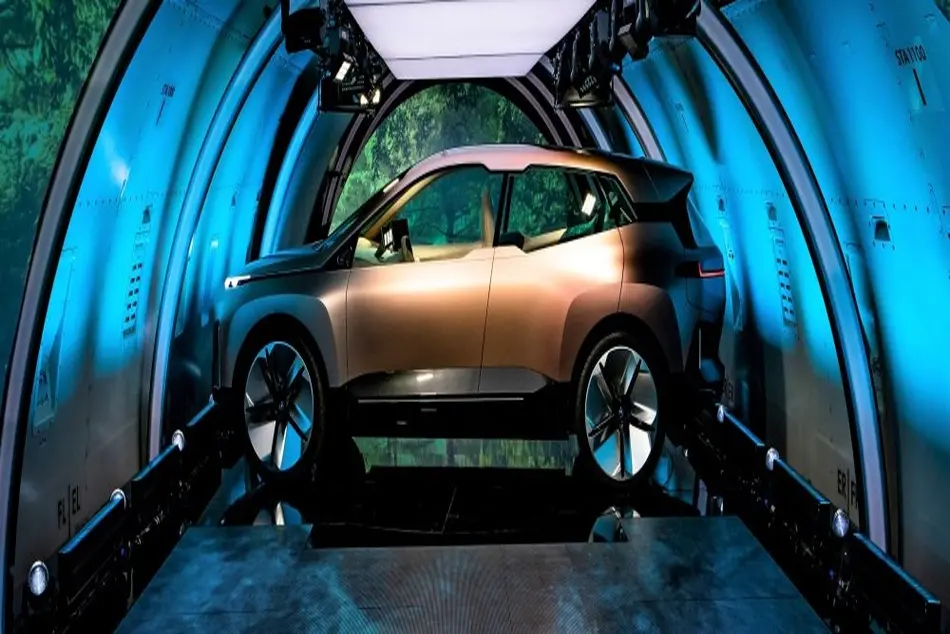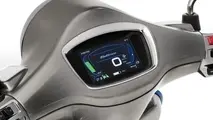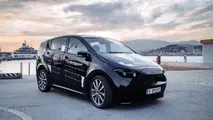BMW’s Tech-Stuffed Concept SUV Heralds Fancy, Electric Future
changing notions of what customers want from cars have pushed automakers to do plenty of weird things. They have unmoored the driver’s seat from the left side of the car, revived the rotary engine and turned windshields into screens. BMW, though, is most likely the first to put down carpeting in the cabin of a cargo jet.

changing notions of what customers want from cars have pushed automakers to do plenty of weird things. They have unmoored the driver’s seat from the left side of the car, revived the rotary engine and turned windshields into screens. BMW, though, is most likely the first to put down carpeting in the cabin of a cargo jet.
Sitting on the tarmac at San Francisco International Airport’s cargo facility, the Lufthansa Boeing 777 has been converted into an unusually human-friendly vehicle. Along with the soft blue stuff underfoot, BMW has installed swanky, modern furniture throughout the cabin. The walls, floor and ceiling of one bit are decked out in screens. And near the front sits the centerpiece of this flying showroom, which has already passed through Munich and New York and will soon set off for Beijing: the Vision iNEXT, a concept car BMW created to lay out its bet on the future, Wired reported.
“This is not just a show car,” says Klaus Frohlich, a member of BMW’s board and the company’s soothsaying spokesperson, with the SUV, an early view at BMW’s next generation of forward-looking vehicles, behind him. “It’s a promise. In 2021, you will get it.” Something like it, anyway.
Along with the rest of the auto industry, BMW has been scrambling to prepare itself for a future in which fewer people own and drive their own vehicles. It has dabbled in car sharing and launched an Uber competitor in Seattle. It is researching autonomous technology and even talks about wild ways to encourage electric cycling. And because there is no doubt that building and selling cars will remain the core of its business for decades to come, it is adjusting there, too.
New Normal
BMW has put some muscle into developing hybrid, plug-in hybrid, and fully electric models and is on track to sell 140,000 of them in 2018 (it moves about 2 million cars a year). But putting gasoline and diesel in the rearview is an early step on a long and perilous journey. “For us, electro-mobility is the new normal, it’s understood,” Frohlich says. “Fine. Therefore, we take up the next challenge.”
So the iNEXT is fully electric, of course, and quite capable of driving itself, though a human can still take the wheel. From the outside, the baby SUV, about the size of BMW’s popular X5, looks roughly believable. The design team swapped the side-view mirrors for cameras that improve aerodynamics; a standard move on concepts, which European regulators have started allowing on production cars.
The narrow headlights resemble sideways apostrophes, and the bow-tie-shaped grille is clearly connected to BMW’s signature kidney design. The 24-inch wheels are likely a bit much for production, Frohlich says, but otherwise “you will get what you see here.”
Tap the button to swing open the car’s suicide doors, though, and you get the hazier bit of the Vision iNEXT. The micro-suede front seats do not swivel around (an idea that has gone from daring to expected to trope in a few years’ worth of autonomous concepts), but they do not look like conventional car seats, either. They seem to flow out of the wall, sit on aluminum legs and do not force you into looking straight ahead.
So the freeform seats are unlikely bets for a car you will see on the dealer lots, not in 2021, anyway. But Frohlich insists that the principles of an interior focused on lounging in luxury will make their way onto the production line. And while he also insists that performance will remain important, the iNEXT’s little steering wheel, programmed to slide back and away from the human when the computer is in charge, looks rather vestigial. This just might be the ultimate riding machine.



